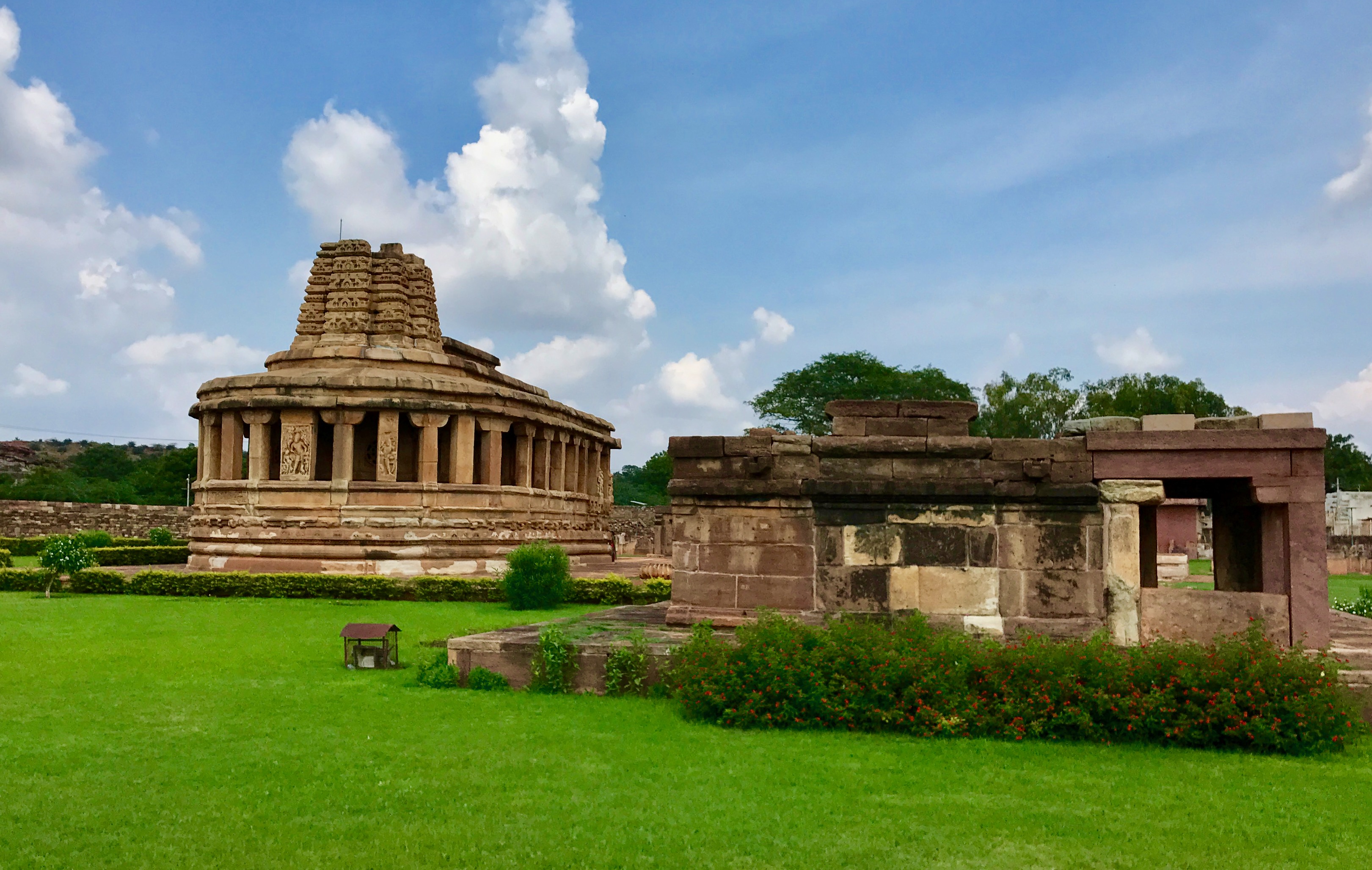The Mallikarjuna Temple Complex stands as a magnificent testament to the architectural brilliance and cultural depth of the Chalukya dynasty, representing a pivotal moment in the artistic and spiritual landscape of medieval Karnataka. Nestled in Pattadakal, this sacred site embodies the intricate fusion of architectural styles that defined the Chalukyan era, where northern and southern Indian design principles converged in breathtaking harmony.
The temple complex emerges from a rich historical narrative that spans centuries of cultural evolution, political transformation, and artistic innovation. The Chalukyas, initially Vaishnavite rulers who later embraced Shaivism, created a remarkable architectural language that transcended traditional boundaries. Their approach to temple construction was not merely about religious expression but a profound statement of cultural integration and philosophical sophistication.
Architecturally, the Mallikarjuna Temple represents a pinnacle of Chalukyan design philosophy. Constructed using locally sourced sandstones and polished black granite, the temple showcases intricate stone carvings that serve as visual narratives of Hindu epics and philosophical concepts. The temple's unique features, such as the shallow arch depicting a dancing Shiva and its distinctive hemispherical roof, demonstrate the Chalukyan commitment to architectural experimentation and aesthetic innovation.
The broader context of Pattadakal reveals a complex socio-cultural landscape where religious, political, and artistic dimensions intersected. The region was not just a site of temple construction but a critical nexus for royal ceremonies, cultural exchanges, and spiritual innovations. Its proximity to other significant Chalukyan centers like Aihole and Badami further amplified its importance as a crucible of artistic and philosophical developments.
Religious symbolism permeates every aspect of the temple complex, reflecting the nuanced theological perspectives of the era. The intricate friezes and sculptures depict complex narratives from Hindu traditions, exploring profound concepts of Dharma, Moksha, and the intricate relationships between Purusha and Prakriti. These visual representations offer deep insights into the philosophical and spiritual worldviews that shaped medieval Indian society.
The temple's historical trajectory is marked by periods of remarkable creativity and subsequent challenges. After the decline of the Chalukya Empire, the region experienced transformations under various ruling dynasties, including the Rashtrakutas and later the Vijayanagara Empire. Each successive period left its subtle imprint on the architectural and cultural landscape, creating a palimpsest of historical memories and artistic expressions.
In contemporary times, the Mallikarjuna Temple Complex represents more than a historical artifact. It is a protected monument under the Archaeological Survey of India, symbolizing the nation's commitment to preserving its rich cultural heritage. The site continues to attract scholars, historians, architects, and spiritual seekers, serving as a living testament to the profound artistic and philosophical achievements of medieval Indian civilization.
The enduring significance of this temple complex lies not just in its physical structure but in its ability to communicate complex cultural narratives across centuries. It stands as a powerful reminder of India's sophisticated architectural traditions, philosophical depth, and the extraordinary capacity for cultural synthesis that characterized the Chalukyan period.


